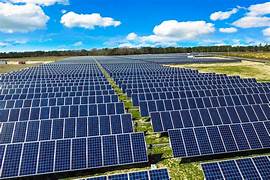Solar roadway
A solar roadway is a road surface that generates electricity by solar power photovoltaics.Panels including solar panels and LED signage, that can be driven on. The concept involves replacing highways, roads, parking lots, driveways, and sidewalks with such a system.
The principle
A solar roadway is a series of structurally engineered solar panels that are driven upon. The idea is to replace current petroleum-based asphalt roads, parking lots, and driveways with solar road panels that collect energy to be used by homes and businesses, and ultimately to be able to store excess energy in or alongside the solar roadways. Parking lots, driveways, and eventually highways are all targets for the panels. If the entire United States Interstate Highway system were surfaced with Solar Roadways panels, it would produce more than three times the amount of electricity currently used nationwide.

Panel construction
prototype panels consist of three layers.
- Road surface layer – translucent and high-strength, it is rough enough to provide sufficient traction, yet still passes sunlight through to the solar collector cells embedded within, along with LEDs and a heating element.
- Electronics layer – Contains a microprocessor board with support circuitry for sensing loads on the surface and controlling a heating element with a view to reducing or eliminating snow and ice removal as well as school and business closings due to inclement weather. The microprocessor controls lighting, communications, monitoring, etc.
- Base plate layer – While the electronics layer collects energy from the sun, it is the base plate layer that distributes that power as well as data signals down the line to all homes and businesses connected to the solar roadway. It needs to be weatherproof to protect the electronics layer above it.
Advantages
Renewability
The main advantage of the solar roadway concept is that it utilizes a renewable source of energy to produce electricity. It has the potential to reduce dependence on conventional sources of energy such as coal, petroleum and other fossil fuels. Also, the life span of the solar panels is around 30–40 years, much greater than normal asphalt roads, which only last 7–12 years.
Military and rescue assistance
In the event of an environmental disaster or military emergency, solar roadways would provide power when it is needed most. As solar power is renewable, it obviously requires no external connection to an artificial power source.
On-the-go charging
With induction plating embedded inside these roads, electric cars can be recharged while in motion on top of these roads. This would reduce the costs and the time-inconvenience of waiting at a charging station.


